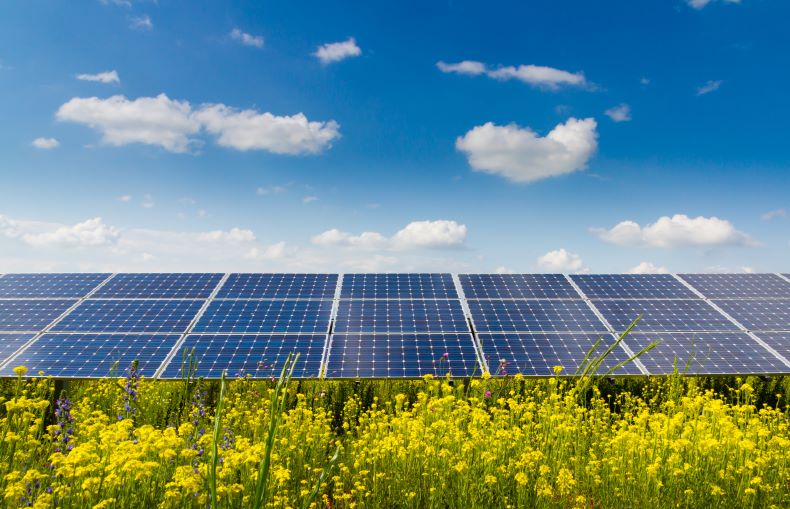Summary:
The U.S. solar energy market was expecting a fall because of COVID-19, but they were solar power industry proved everyone wrong.
Main Article:

The U.S. solar energy market registered pandemic-related pain in the second quarter of 2020, as expected, after logging its highest Q1 growth ever at the outset of the year.
Residential solar installations dropped by nearly 25 percent from Q1 to Q2 2020, according to the most recent data from Wood Mackenzie and the Solar Energy Industries Association. The April to June period was the first quarter that overlapped entirely with the coronavirus pandemic.
But the declines hit the country unevenly, with the most significant drops in residential solar installations seen in the locales with the most restrictive shutdown orders.
Overall, analysts have softened their view of how severely the pandemic will constrain solar energy growth this year; at the end of Q1, analysts expected the market to undercut pre-COVID-19 forecasts by 9 percent. WoodMac and SEIA, in forecasts released Thursday, now expect declines of 6 percent below pre-pandemic forecasts.
Even with an uncertain road ahead, the solar power market is still expected to grow in 2020, with capacity additions expected to rise 37 percent year-over-year. That’s because while the coronavirus chilled residential solar installations, the large-scale market continued its upward trajectory in the second quarter.
“The volume of projects that we’ve seen announced in Q1 and Q2 has been pretty high,” said Colin Smith, a WoodMac senior solar analyst. “The development pipeline is the biggest we’ve ever seen.”
Largely unaffected by shutdown orders, utility-scale solar installations accounted for 71 percent of the total 3.5 gigawatts brought online in Q2. All told, analysts expect developers to complete a total of more than 18 gigawatts of projects in 2020, up from 13.3 gigawatts in 2019.
The numbers from WoodMac are on the higher end of what many of the rooftop solar power industry's largest national players reported in Q2 earnings calls.
SunPower's solar installations fell nearly 30 percent from Q1 to Q2, while solar power industry leader Sunrun's solar installations fell about 20 percent. Vivint Solar, which will soon be acquired by Sunrun, reported an solar installation drop of 10 percent from Q1 to Q2, and Sunnova's solar installations fell 9 percent. Small and regional solar installers were more likely to feel difficulties presented by the coronavirus than the large, well-resourced national players.
The residential industry’s aggressive attempts to pivot to online sales in the face of shutdowns softened the blow of orders that eliminated door-to-door pitches and forced sales to transpire via computer screen. The designation of solar panels as an essential business in most locations also helped installers recover from an initial solar installation freeze. And ultimately, many top solar energy states, such as Florida, Arizona and Texas, are led by conservative governors. As shutdown orders became politically polarized, governors in those states did not institute the same types of public health regulations as their counterparts in California and the Northeast.
Heading into late 2020, the turbulent economy presents headwinds for both residential and large-scale solar installations. Though rooftop solar companies have pitched their product as a way for homeowners to save money in a recession, it’s unclear if sales will back that reasoning with data. At the same time, the COVID-19-related recession has disproportionately hurt low-wage and hourly service workers, who are less likely to own homes and thus be able to access residential solar. Overall, in the first quarter of the year, analysts expected challenges for rooftop solar installations to depress 2020 installations 32 percent below pre-pandemic expectations.
A constrained tax equity market is also expected to hit large-scale projects. That may push solar installations originally slated for this year into 2021 and some expected to come online next year into 2022.
“It feels like a very new...and very interesting time to be doing utility solar. It’s still going forward in a very strong way,” said Smith. “We’ve just had a point where there’s a lot of uncertainty in individual projects based on a glut of projects all trying to get financing, [and] at the same time COVID-19 [was] causing uncertainty.”
Want to go Solar? See how much you can save before the installer comes out by using the HahaSmart price checker tool and you can customize your solar-powered system with the design DIY tool.


Input your address to see if it is solar friendly and how much you can save with solar.
Great. Your address is perfect for solar. Solar incentive is still available. Select monthly utility cost and calculate the size of solar system you will need now.
| kw System size | years Payback period | Lifetime savings |
No money down, 100% finance is available.

|
|
Want to Go Solar? Sign Up Here! |
Comments